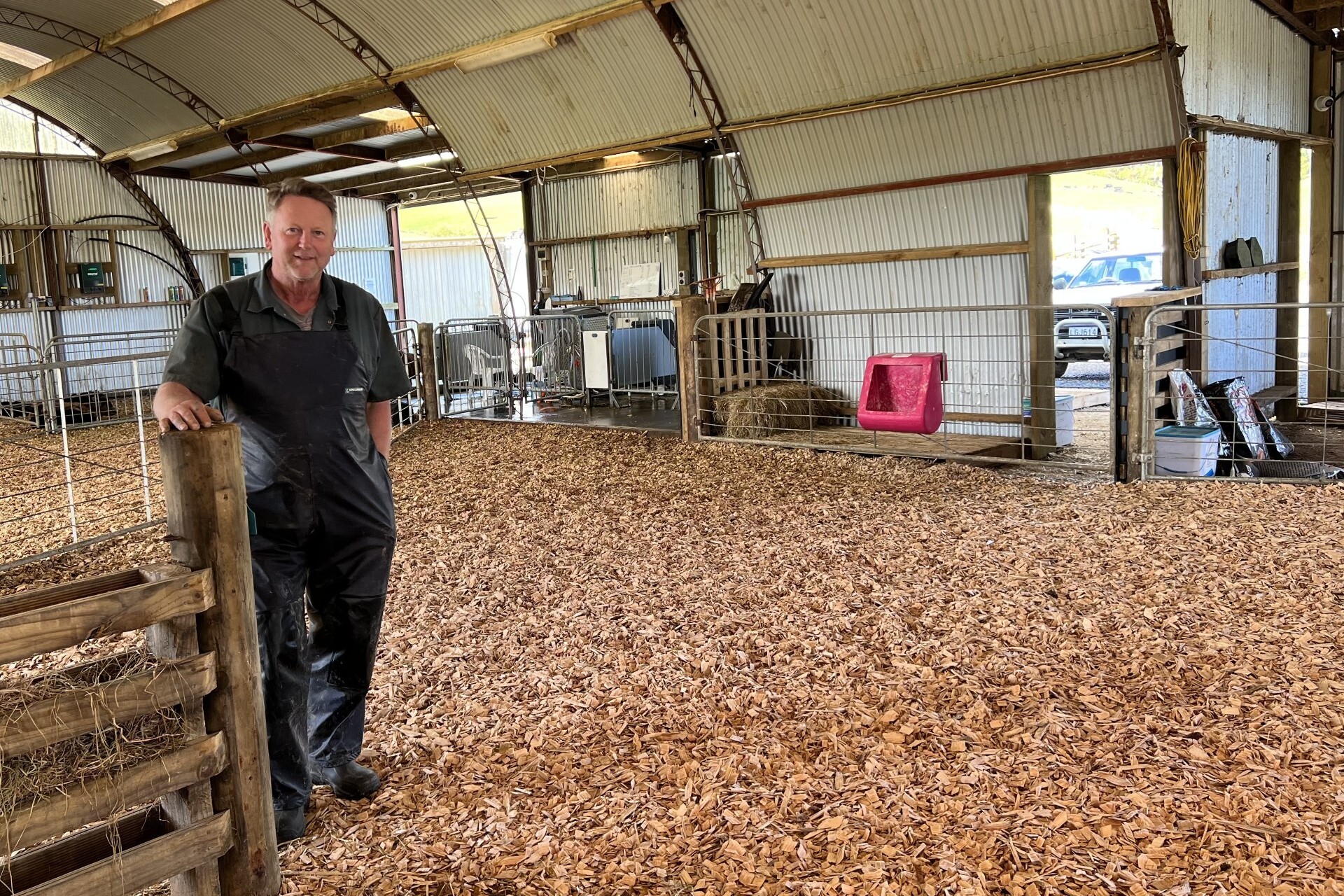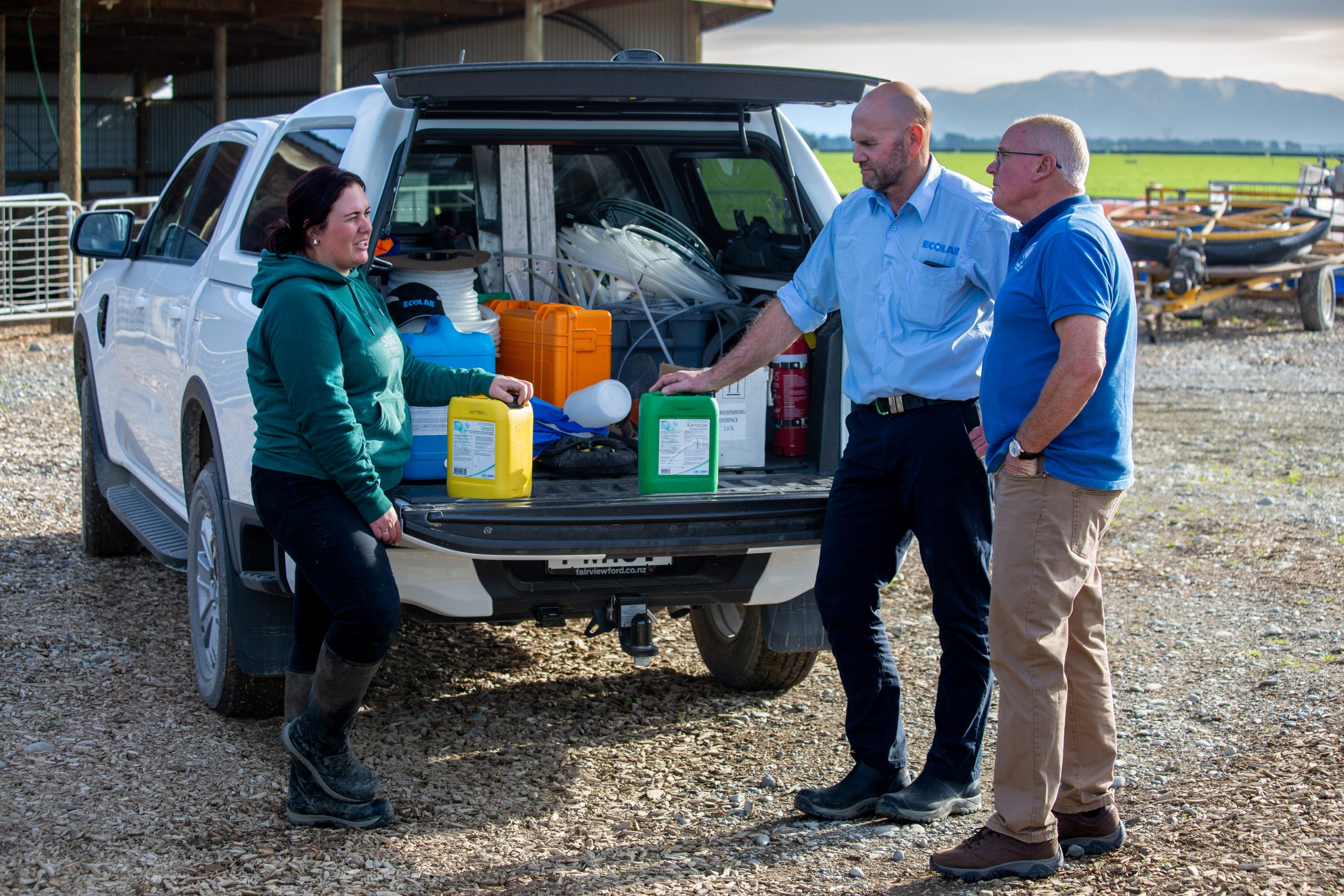Is your calf sick?
Manawatu vet Lisa Whitfield outlines the ways to check whether your calves are sick.

It is easy to miss a calf which is starting to go off-colour during spring when everyone and everything is hectic on the farm and the pens are full. However, picking up on illness early is important, and will lead to better outcomes for the animal if treatment is initiated before the illness takes hold.
As basic first aid on the farm, you should be able to perform a physical check of a calf and decide whether it warrants more attention or not. The following goes through some health check basics which everyone can undertake:
Rectal temperature
Normal calves will maintain their body temperature within a small window – a rectal temperature of 37.5 Celsius up to 39.4C would be acceptable – this range is dependent on the ambient temperature of the environment.
Calves unwell with infections will most often experience a fever – a rectal temperature of 39.5C and above is consistent with a fever. High body temperatures will cause lethargy and inappetence, while a low body temperature will cause weakness. Low body temperature is very serious and should be addressed immediately.
Having a thermometer on hand to use on the farm is a great first step in deciding whether an animal is well or not.
Skin tenting
Calf skin should be smooth and elastic, and when a skin tent is raised it should snap back into place immediately.
When the skin is slow to snap back into place – for example a two-second delay – this is abnormal and is an indicator of dehydration.
Skin tenting can be tested on the side of the neck where there is loose skin, or on the upper eyelid.
Eyes
A healthy calf should have bright, inquisitive eyes and actively look around its environment. Eyelids should be held wide open, and the surface of the eye should be clear.
Signs of illness include dull, staring eyes, and when the eyes are sunken back into the sockets. The eyes should not normally discharge fluids on to the face.
The eyes may discharge clear fluid from the corner of the eye in cases of pneumonia, or cloudy discharge in cases of eye disease.
In calves, sunken eyes are a good indicator of hydration status – for example, an animal suffering from untreated or severe scours will experience sunken eyes due to dehydration. Many diseases will cause sunken eyes, so this is a very good first indicator of calf health.
Nose
Calves should have a shiny moist nose which is free of sores. A small amount of clear nasal discharge is normal however cloudy, white or green discharges can indicate infections of the respiratory tract. A dry nose is an indication of dehydration.
Navel
After the first three to four days the navel should be dry and the cord should have shrivelled and fallen off.
The navel of a calf should be small, pliable and pain-free on palpation. The internal remnants of the umbilical vessels can be felt within the skin. These remnants should be smaller in diameter than the thickness of your index finger. The skin of the navel should not contain fluid or be swollen.
While a normal external navel may be present this does not completely rule out navel disease as the umbilical is connected directly to the abdomen of the calf, and deeper infections may be hidden.
Breathing
Calves have a respiratory rate of 20 to 30 breaths per minute at rest. Breathing can become elevated when they are sleeping, following exercise or if they are getting warm in full sun. It can also become elevated with respiratory diseases such as pneumonia, or if they are in pain.
Breathing should be quiet and easy. Calves should not routinely cough, although this is common if they have just had a milk feed.
Suckle reflex
A calf which has not recently fed should have a strong suckle reflex and drive to feed. The suckle reflex can be tested by placing your fingers in the calf’s mouth. Absence of suckle can occur with calf scours, when dehydration and metabolic derangement occurs. It is a serious problem as it makes rehydration more difficult.
Calves should be able to suckle consistently for a prolonged time. Failure to be able to suckle for more than a few mouthfuls could indicate difficulty with breathing such as pneumonia, or weakness from other disease.
Faecal consistency
Calf faeces can be variable in appearance and colour depending on what the calf has been fed and what it is eating. Calf faeces should be semi-formed, and generally yellow in colour. Once in the paddock and with access to grass, the faeces should change to dark green.
Diarrhoea can occur sporadically and without any issues for a short time if there has been a change in routine or milk quality or quantity. However, diarrhoea which persists beyond a few hours can readily result in dehydration and the calf should be attended to.
If a calf has caught your eye, it pays to take a closer look at it immediately before the rest of your day catches up with you. If you have taken a closer look and the calf is unwell, consider whether veterinary examination is warranted – are you confident you know what is going on? If not, a veterinary examination will go into much more detail and should be able to narrow down a specific diagnosis and treatment plan to get the calf back on track.
Calves are the future of your herd, and anything which impacts on their health can have an ongoing impact into their productive life in the herd. Tackling illness early on is much more likely to have a better outcome for the calf and lead to a healthier herd in the future.





